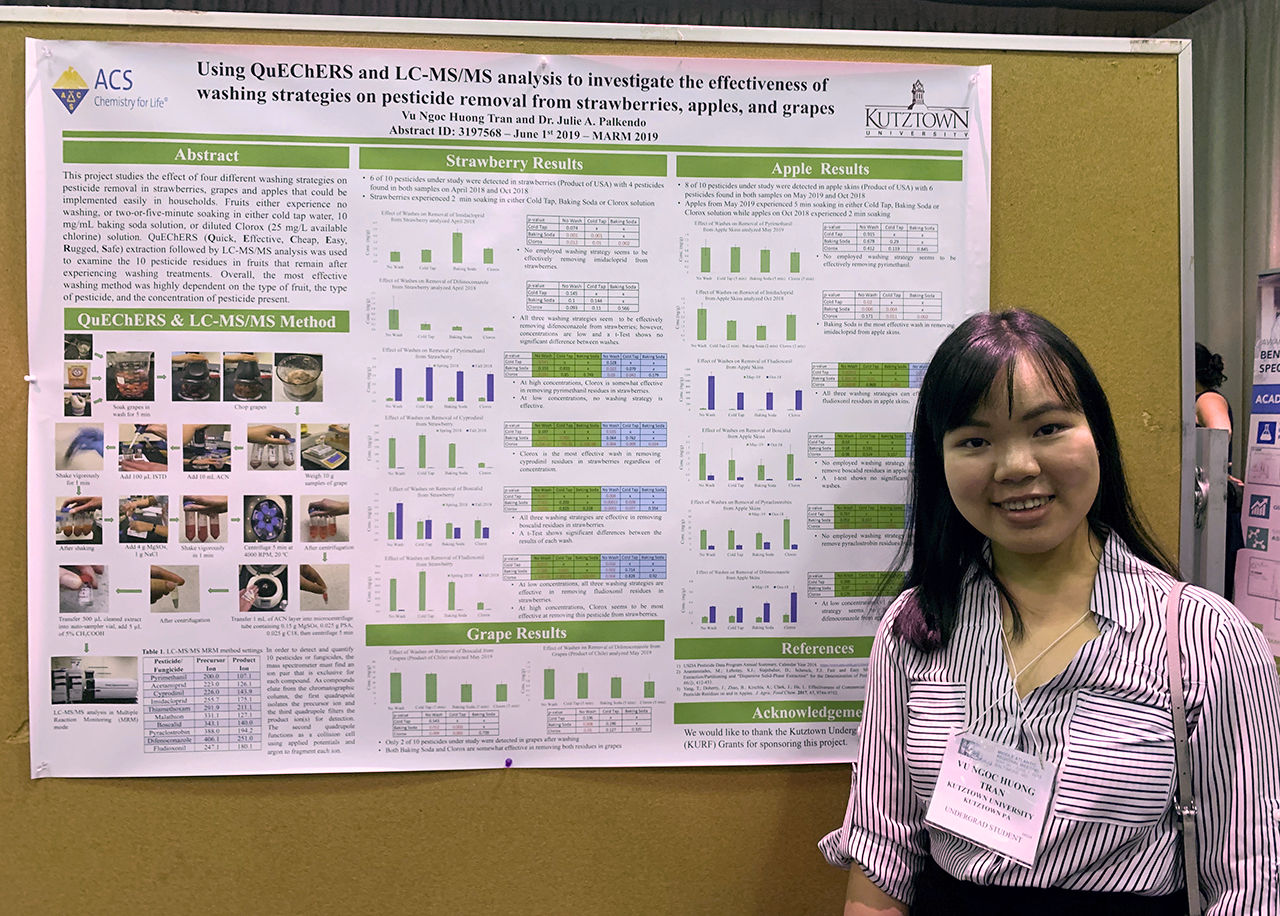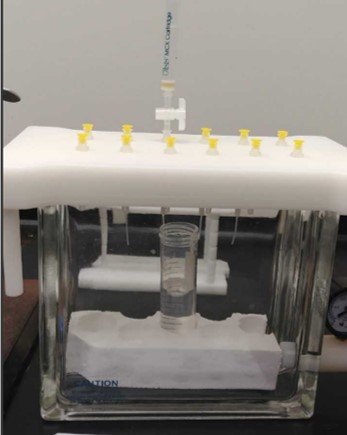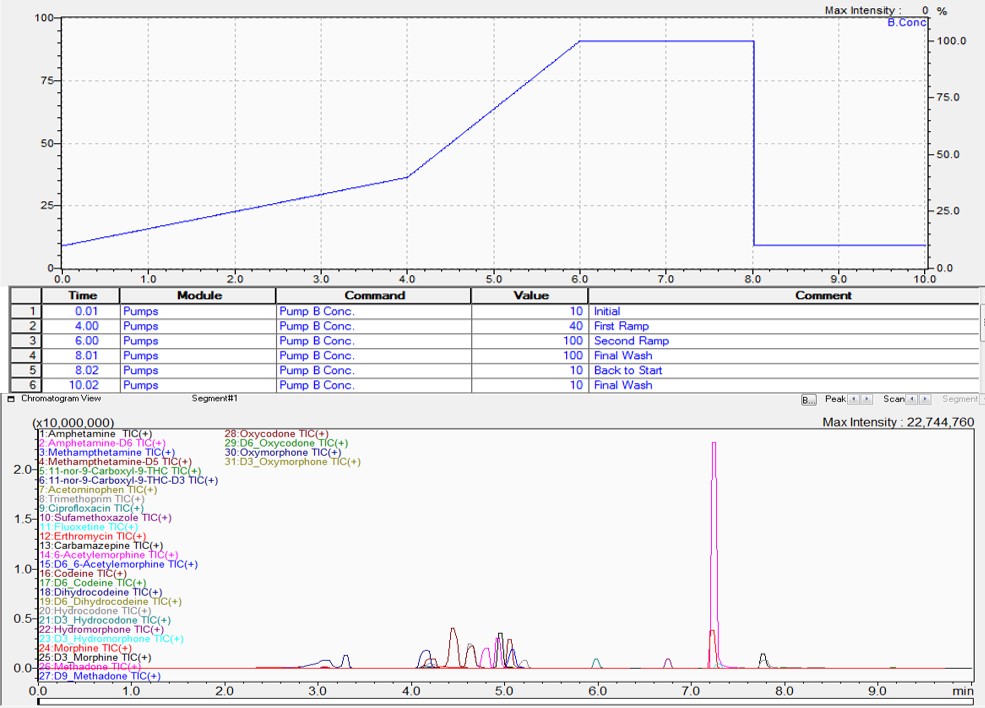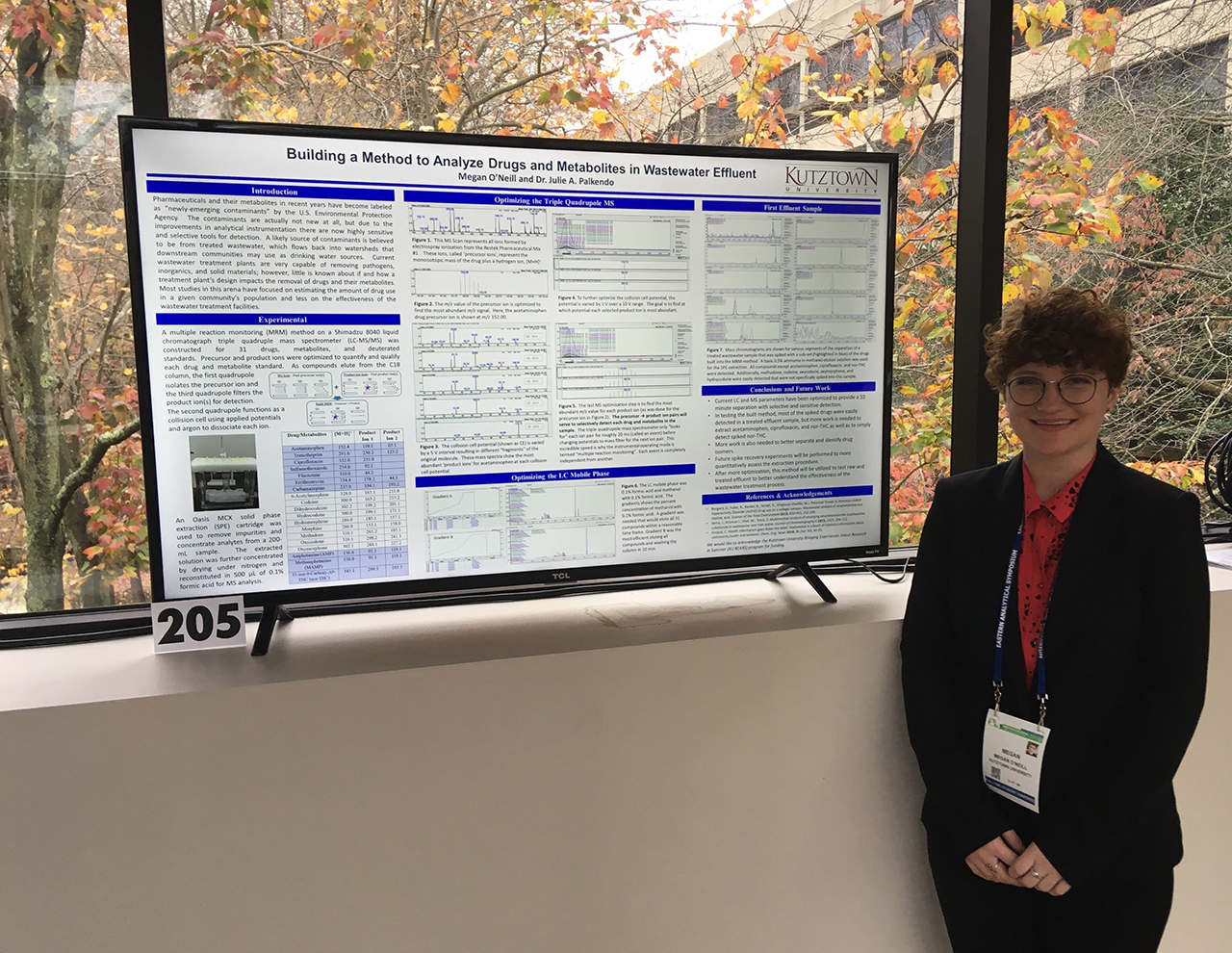Dr. Julie Palkendo
Professor of Environmental Chemistry
Contact Information
- Office: 316 Boehm Science Center
- Phone: 610-683-4442
- Email: palkendo@kutztown.edu
Courses Taught
- CHM100 - General Chemistry I
- CHM102 - General Chemistry II Lab
- ENV100 - Intro to Environmental Science
- ENV220 - Environmental Analysis
- CHM230 - Analytical Chemistry I Lab
- CHM370 - Research in Chemistry
- ENV370 - Research in Environmental Science
- ENV380 - Senior Seminar in Environmental Science
Current Research Projects
Investigating the Effectiveness of Washing Methods to Remove Pesticides on Fruit
Pesticide residues in foods are warned widely to cause negative impacts on human health. With a desire to achieve healthy lifestyles and nutrition, many households are beginning to consume organic fruits, which are well-known to have significantly lower levels of pesticides. However, this is not possible for all households as certified-organic options remain expensive. Therefore, a washing method that can be implemented easily in the home on non-organic fruits is an essential solution for the rising demand in consumption of pesticide-free fruits at a reasonable price.

In this work, fruits either experience no washing, or two-or-five-minute soaking in either cold tap water, 10 mg/mL baking soda solution, or diluted Clorox (25 mg/L available chlorine) solution. After washing, the QuEChERS (Quick, Effective, Cheap, Easy, Rugged, Safe) extraction is performed and shown on the left. LC-MS/MS analysis is then used to screen for 10 fungicides and insecticides commonly found in fruits by the USDA Pesticide Data Program. The chemical data from the LC-MS/MS not only
To date, the most effective washing method seems to be highly dependent on the type of fruit, the type of pesticide, and the concentration of pesticide present.

Huong Tran, freshman Biochemistry major, presents research poster at Middle Atlantic Regional Meeting (MARM) of the American Chemical Society on June 1, 2019 in Baltimore, MD
Developing an Efficient Solid-Phase Extraction and LC-MS/MS Analysis to Study Drugs and Metabolites in Wastewater Effluent
Pharmaceuticals and their metabolites in recent years have become labeled as “newly-emerging contaminants” by the U.S. Environmental Protection Agency. The contaminants are actually not new at all, but due to the improvements in analytical
The very first step of this project is to determine an efficient and effective solid-phase extraction protocol. In this process, the sample is converted from raw or treated wastewater to "clean" extract that is ready for analysis by LC-MS/MS. This sample preparation stage is the most time-consuming of all steps in the experiment and has
Here an Oasis MCX


The second phase of the method development is to modify the liquid chromatographic conditions to best separate the mixture of drugs in the least amount of time possible. This is done by changing the mobile phase composition of the LC component of the LC-MS/MS instrumentation, which is shown in the top graph. The bottom graph shows

Junior Biochemistry major Megan O'Neill presented her research ePoster at the Eastern Analytical Symposium in Plainsboro, NJ on November 13, 2018
Past projects
| Analysis of Particulate Matter from Train Diesel Emissions in the Borough of Kutztown |
| Are non-target honey bees, Apis mellifera L., exposed to dinotefuran from spotted lanternfly, Lycorma |
| Analysis of NH4+ and NO3- in Soil Samples from Field Margins using Visible Spectroscopy |
| Developing an Accurate, Robust Method for Microwave Digestion of Metals in Soil Core Samples from the |
| Investigating the Effects of Natural Gas Fracturing on Local Stream Quality in Susquehanna County, PA |
| Determination of Wear Metals in Used Motor Oil using Flame Atomic Absorption Spectroscopy |
| Analysis of Lead in PM2.5 Collected from a Beta Attenuation Monitor from the KU Air Monitoring Station |






